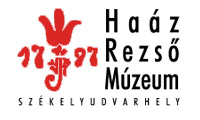Kovács Petronella (szerk.): Isis - Erdélyi magyar restaurátor füzetek 8-9. (Székelyudvarhely, 2009)
Puskás Éva: A Szatmári Római Katolikus Egyhámegye kulturális javaainak megmentése
Abstracts Zoltán Miklós Ethnographic values of the Homoród region The 8th conservation conference organised at Székelyudvarhely included a visit to the villages in the valleys of the Homoród rivers. This micro-region contains a series of settlements established in the southwards widening parallel valleys of Homoród, which is enclosed by Southern Hargita, the northern extension of the Persány Mountains and the hills at the eastern brim of the Udvarhely Basin. Regarding the social and the architectural homogeneity, the Homoród region in a strict sense consist of eighteen villages and a small town. The Homoród region is considered to date as a disadvantaged region of Székelyföld. This disadvantage is stressed by the fact that no real big businesses can be mentioned, live workforce is still dominant in the agriculture and there are not enough machines helping the cultivation of the inferior quality soil. The only means of subsistence is cultivation for many families even to date. This micro-region hides countless values from an ethnographic aspect despite the fact that many handicraft and homecraft establishments have stopped working, yet the legacy can be estimated from the countless objects that attest to their former existence. The most conspicuous trait we could observe in the visited villages was the uniform architectural style. Apart from two settlements (Kápolnásfalu és Szentegyeháza) where the Székely architectural traditions were respected, an architectural practice mixed with Saxon impacts became generally accepted in the strings of settlements established along the banks of the Small and Large Homoród rivers. Closed fronts and agglomerated streets dominate, and streets along the rivers and streamlet alternate with small streets climbing up the hills. The new family dwellings built in the 19lh century were decorated with painted furniture. In effect of the increased demand, a uniform furniture painting style became dominant in the region, the evolution of which can be linked with the painter joiners of the Balázs family. The villages in the less productive area specialised in selling various homecraft and handicraft products to supplement their income. Planks and tools made from wood and also burnt lime were exchanged with the help of carter tradesmen. The inhabitants of a few villages were specialised in wool processing (carpet and cserge [thick woollen blanket] weaving), while in other villages, pottery brought profit. Mills, sawmills and fulleries used the waters of the two rivers. The high-capacity iron bloomery constructed in the middle of the 19th century was also based on water power. A large proportion of the constructions along Small and Large Homoród can deservedly be included in the cadastre of the constructed heritage. We cannot any more speak of completely uniform village views yet the streets or parts of the streets have preserved the folk architectural style that manifested itself in the combination of diversity and traditional mentality. We are convinced that the visit paid to this region was a great experience not only because of the view of monument churches but also owing to the insight into the lifestyle and the material culture of the local communities. Zoltán Miklós Ethograph Haáz Rezső Museum Odorheiu Secuiesc Romania Phone: +40-266-218-375 E-mail: mikloszoli@yahoo.com Attila L. Tóth Electron Probe Microanalysis in Conservation-Restoration Part I : Scanning Electron Microscopy Introduction: The electron microprobe analyzer (EPMA), is basically a scanning electron microscope (SEM) combined with an energy or wavelength dispersive X-Ray spectrometer (EDS or WDS), specialized and optimized for elemental analysis of surface-near volumes of cubic micrometer size. In the last half century this flexible instrument and method soon found its way from the mineralogy and metallurgy to the conservation-restoration. The flexibility and versatility of the SEM-EPMA, an advantage for the analyst, can be disadvantage for the conservator, as the choice of optimal working mode, the interpretation of the results or even the appropriate sampling and sample preparation require a basic knowledge of the method. On the other hand the conservator’s active participation in the measurement and the interpretation is the key of success. The two part paper starts with an introduction of the measurement and interpretation (Part I) then practical hints and tips follow (Part II) in order to avoid the pitfalls of sampling, preparation and interpretation while illustrate the beauty of the method. The EPMA instrument is basically an X-Ray spectrometer, where the radiation is emitted from a small region of the sample. This is realized by irradiating of the sample surface by an energetic (1-50 keV) electron beam 185
